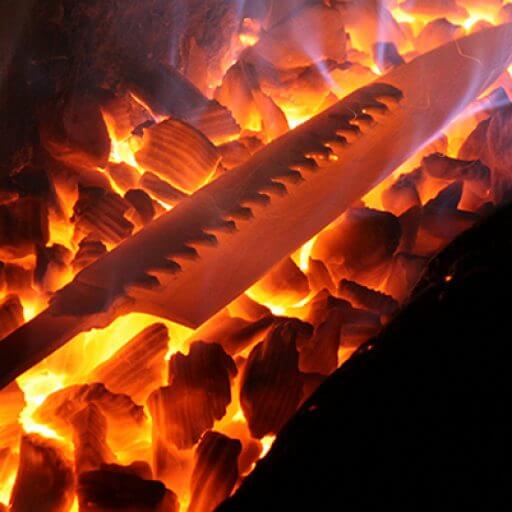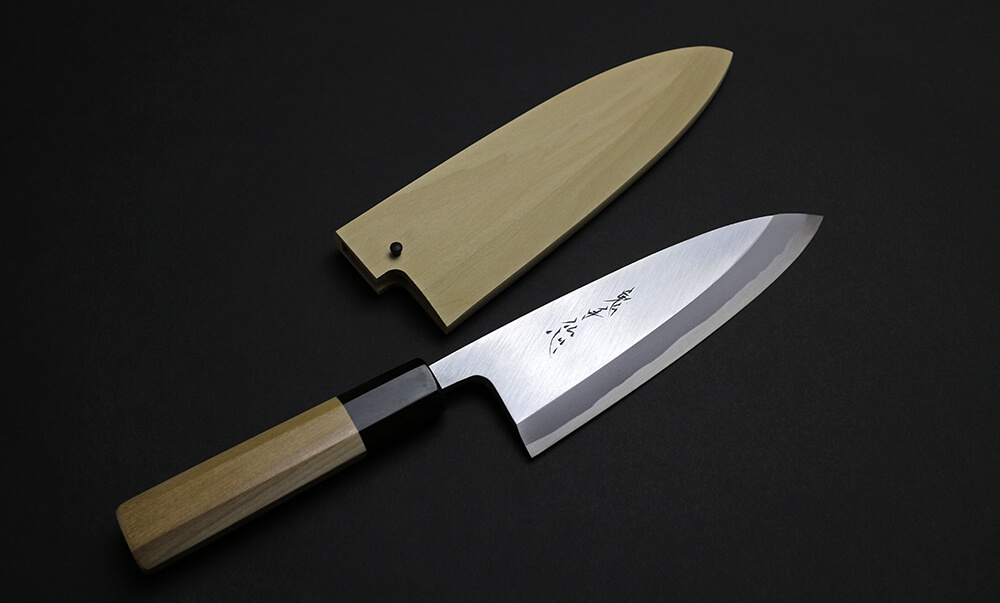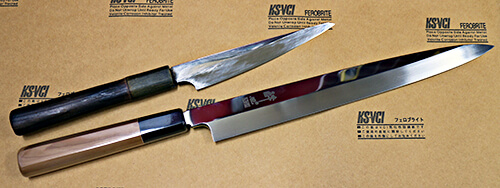Focus on the Blade, Not Just the Edge! Tips for Knife Enthusiasts

This morning, I had some free time, so I decided to sharpen my trusty ‘interrupting knife’ that I use around the house. The request was to make it cut tomatoes like a breeze (^^)b. Now, if you just want it to cut smoothly, it’s as simple as getting rid of those tiny nicks. In fact, with a machine, you could probably get it done in 20 seconds flat, both sides.
‘Sharpen it while it’s standing, and the edge will come back in no time!’ The challenge in knife sharpening might not be in mastering this part, but perhaps it’s about getting the blade itself just right. To put it simply, it’s the adjustment of the blade’s shape, excluding just the edge, that can be quite tricky.
Home kitchen knives, to begin with, have their blades set at an angle. While this design provides durability, it can be a bit of a struggle to restore their sharpness once they lose their edge. Sure, there are simple sharpening devices like sharpeners, but they merely touch the edge, serving as quick fixes. They’re like temporary solutions.
To truly rejuvenate the knife and make it sharper than new, the key lies in eliminating the initially angled edge, almost as if starting from scratch. Achieving this involves sharpening the blade itself. It might seem futile for a moment, as you’re honing the parts that don’t actually do the cutting. But, the difference is astonishing – the blade’s performance improves dramatically. You’ll feel the blade glide effortlessly, experiencing that satisfying sensation of seamless cutting.
When you aim for that ‘swift and smooth’ sensation while slicing tomatoes, it’s not just about a keen edge at the tip; it’s about the clean cut too, which involves battling friction. That’s why merely thinning the blade isn’t enough – it might still stick. This is where introducing a slight Hamaguri curve comes into play. You’re shaping the knife in a way that takes this into account. Only when this is accomplished can you proceed to further sharpen the last 2mm to 3mm from the edge using a finishing stone. This process elongates and refines the edge, ensuring it’s thin and finely extended.
Once it’s in this state, it can achieve the sharpness akin to a single-edged Japanese knife. However, considering the usage environment and the user being a homemaker, I’ve opted to introduce the ‘Itohiki’ technique and add a small back bevel. At this point, you might have a sentimental moment of ‘Am I sacrificing the edge I just honed?’ Yet, I believe it’s better to choose a strong edge over a fragile one that would chip easily. Strictly speaking, incorporating the Itohiki technique might not be ideal, but since the blade’s shaping is done meticulously, it delivers a cutting performance without any perceivable back bevel. This aspect of sharpening could be the defining factor for the quality or level of the sharpening.
Tonight, I’ll be delivering the sharpened knife! I’m looking forward to hearing the feedback in the coming days. I’ve poured everything I can into this sharpening. The end result in terms of cutting ability is satisfying, but the question remains: how long will it maintain this level of performance?
hibishugyo
- 2007-04-25




